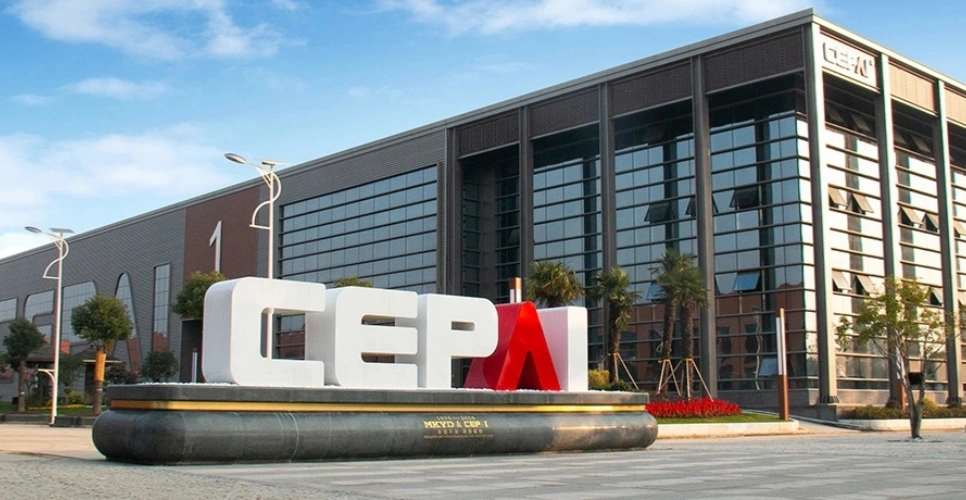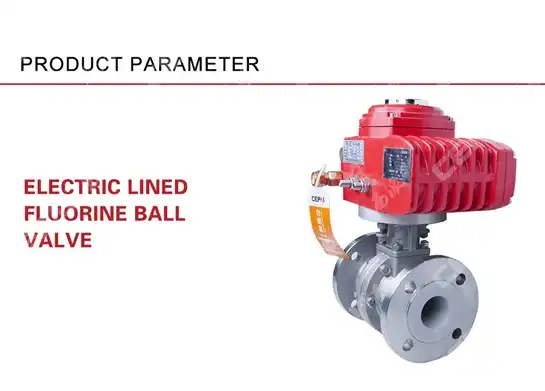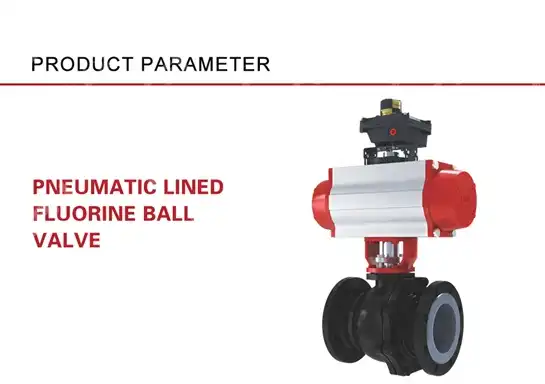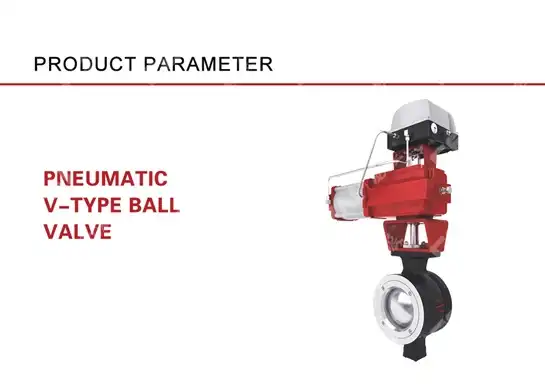How Compact Pneumatic O-Type Ball Valve Improves Industrial Efficiency?
In manufacturing environments where every second of downtime translates to thousands in lost revenue, fluid control systems remain a critical bottleneck. The Compact Pneumatic O-Type Ball Valve addresses this challenge by delivering rapid actuation, minimal maintenance requirements, and exceptional sealing performance in space-constrained installations. This advanced valve technology combines the reliability of traditional ball valve design with the automation benefits of pneumatic actuation, offering industries a solution that reduces operational costs while maximizing throughput and system uptime across demanding applications.

Understanding Compact Pneumatic O-Type Ball Valve Technology
The Compact Pneumatic O-Type Ball Valve represents a significant advancement in industrial flow control technology. Unlike conventional manual ball valves, these automated systems integrate compressed air actuation mechanisms within a streamlined housing, reducing installation footprint while maintaining superior performance characteristics. The O-type configuration features a full-bore design where the ball opening matches the pipeline diameter exactly, eliminating flow restrictions and pressure drops that compromise system efficiency in traditional reduced-bore alternatives. Modern Compact Pneumatic O-Type Ball Valve designs incorporate precision-machined components manufactured to exacting tolerances, ensuring consistent performance across millions of operational cycles. The pneumatic actuator converts compressed air pressure into rotational motion through a rack-and-pinion or scotch-yoke mechanism, rotating the ball element ninety degrees between fully open and fully closed positions. This quarter-turn operation occurs in milliseconds, enabling rapid response to process changes that manual valves simply cannot match. The integration of position indicators, limit switches, and solenoid control valves allows seamless integration with distributed control systems and programmable logic controllers throughout industrial facilities.
-
Core Components and Design Features
The fundamental architecture of a Compact Pneumatic O-Type Ball Valve consists of several integrated subsystems working in concert. The valve body, typically manufactured from carbon steel, stainless steel, or specialized alloys, provides structural integrity and pressure containment while directing fluid flow. Within this housing, the spherical ball element features a precisely machined through-hole aligned with inlet and outlet ports in the open position. High-performance sealing rings, commonly fabricated from PTFE, reinforced PTFE, or elastomeric compounds, maintain zero-leakage shutoff across differential pressures exceeding hundreds of bar. The pneumatic actuator assembly mounts directly to the valve stem through ISO-standard mounting interfaces, eliminating the need for custom brackets and reducing potential failure points. Internal springs within the actuator housing provide fail-safe operation, automatically returning the valve to either open or closed positions during air supply interruptions. Advanced actuator designs incorporate adjustable mechanical stops for precise positioning control, while external cushioning systems dampen impact forces during high-speed cycling, extending component service life significantly beyond conventional designs.
-
Operating Principles and Automation Integration
Compact Pneumatic O-Type Ball Valve operation relies on compressed air systems typically maintained at pressures between 4 and 7 bar in industrial facilities. Control signals from process automation equipment activate solenoid valves that direct compressed air to specific actuator chambers, generating the torque necessary to rotate the ball element. Double-acting actuators utilize air pressure for both opening and closing strokes, providing maximum control authority and faster cycle times compared to spring-return configurations. However, spring-return designs offer critical fail-safe functionality in safety-instrumented systems where predetermined valve positioning during power failures prevents hazardous conditions. The integration capabilities of modern Compact Pneumatic O-Type Ball Valve systems extend beyond simple on-off control. Positioner modules mounted on the actuator accept standardized control signals and continuously adjust valve position to match setpoints, enabling precise flow modulation in applications requiring throttling capability. Feedback transmitters communicate actual valve position to supervisory control systems, facilitating closed-loop process optimization and early detection of performance degradation. Network communication protocols including HART, Foundation Fieldbus, and PROFIBUS enable remote diagnostics, predictive maintenance scheduling, and seamless integration within Industry 4.0 frameworks increasingly prevalent in advanced manufacturing environments.
Key Efficiency Advantages in Industrial Applications
The deployment of Compact Pneumatic O-Type Ball Valve technology delivers measurable efficiency improvements across multiple operational dimensions. Energy consumption analysis reveals significant advantages over alternative actuation methods, particularly in applications requiring frequent cycling. Pneumatic systems leverage existing compressed air infrastructure without the electrical loads associated with motorized actuators, reducing facility power demands and associated operating costs. The instantaneous response characteristics eliminate the gradual positioning ramps inherent to electric motor systems, minimizing transition periods where process conditions deviate from optimal parameters. Maintenance efficiency represents another critical advantage distinguishing Compact Pneumatic O-Type Ball Valve installations from conventional alternatives. The simplicity of pneumatic actuation mechanisms, comprising fewer moving components than complex electric motor assemblies, translates to extended maintenance intervals and reduced spare parts inventory requirements. Routine service procedures typically involve seal replacement and lubrication tasks completable by technicians during standard maintenance windows, avoiding expensive process shutdowns. The robust construction withstands harsh environmental conditions including temperature extremes, corrosive atmospheres, and high vibration levels that rapidly degrade electronic components in motor-operated valve systems.
-
Operational Speed and Response Time Benefits
The rapid actuation capability of Compact Pneumatic O-Type Ball Valve systems directly impacts production throughput and process safety margins. Traditional manual valves require operator intervention and physical access, introducing delays measured in minutes when process adjustments become necessary. Electric actuators improve upon manual operation but still require several seconds to complete full-stroke movements, creating windows where process deviations compound before corrective actions complete. Pneumatic actuation reduces full-stroke timing to under one second in most installations, enabling near-instantaneous response to emergency shutdown commands, pressure transients, and batch process transitions. This speed advantage proves particularly valuable in automated manufacturing environments where cycle time optimization determines production capacity. Filling operations, material transfer sequences, and product changeovers benefit from the ability to precisely time valve operations without margin allowances compensating for actuation delays. The elimination of these buffer periods aggregates into substantial productivity gains over annual production cycles, while simultaneously reducing quality variations attributable to inconsistent timing in critical process steps. Industries operating under stringent safety regulations appreciate the rapid isolation capabilities during abnormal operating conditions, where milliseconds separate manageable incidents from catastrophic failures.
-
Space Optimization and Installation Flexibility
Compact Pneumatic O-Type Ball Valve designs address the chronic space constraints plaguing modern industrial facilities. Retrofitting automation capabilities into existing installations often encounters physical limitations where traditional valve-plus-actuator assemblies simply will not fit within available clearances. The integrated construction philosophy underlying compact pneumatic designs minimizes overall envelope dimensions through optimized component packaging and streamlined actuator housings. This space efficiency enables automation implementation in previously inaccessible locations, including elevated piping runs, congested equipment skids, and confined enclosures where manual valve operation presented ergonomic challenges or safety hazards. The reduced weight characteristics of compact pneumatic assemblies compared to equivalent electric motor-operated alternatives simplify structural support requirements and reduce installation costs. Piping systems support the combined valve-actuator weight without requiring additional bracing or reinforcement, while maintenance personnel handle components during service activities without specialized lifting equipment. Multi-plane mounting capability allows installation in any orientation without performance degradation, providing flexibility to route piping along optimal paths rather than compromising layouts to accommodate valve orientation restrictions. These installation advantages accelerate project schedules, reduce engineering rework, and enable efficient utilization of valuable facility space for revenue-generating equipment rather than oversized valve galleries.

Industry-Specific Applications and Performance
Compact Pneumatic O-Type Ball Valve technology finds widespread adoption across diverse industrial sectors where reliability, efficiency, and precision flow control determine operational success. The oil and gas industry represents a primary application domain where these valves manage hydrocarbon flows under extreme pressure and temperature conditions. Wellhead installations, gathering systems, and processing facilities deploy thousands of automated ball valves to isolate equipment, regulate process flows, and implement emergency shutdown sequences protecting personnel and assets. The full-bore design eliminates flow restrictions that accelerate erosion in high-velocity service, while the compact footprint proves essential in offshore platform installations where weight and space limitations dictate equipment selection. Chemical processing operations leverage Compact Pneumatic O-Type Ball Valve capabilities to handle corrosive, toxic, and reactive materials requiring absolute containment integrity. The quarter-turn shutoff mechanism provides rapid isolation during abnormal conditions, preventing hazardous material releases and protecting downstream equipment from incompatible substances during product changeovers. Material compatibility options including exotic alloy bodies, ceramic ball elements, and specialized seal materials enable safe handling of aggressive chemicals that rapidly attack conventional valve components. The automation integration supports precise recipe execution in batch processes while maintaining comprehensive documentation for regulatory compliance and quality assurance programs.
-
Power Generation and Energy Sector Deployment
Power generation facilities, whether conventional fossil fuel plants, nuclear installations, or renewable energy systems, rely extensively on automated valve technology for safe and efficient operation. Compact Pneumatic O-Type Ball Valve installations control feedwater flows, regulate steam conditions, and manage auxiliary systems supporting generation equipment. The fail-safe operation characteristics prove critical in emergency scenarios where rapid shutdown sequences must complete reliably despite system malfunctions elsewhere. Nuclear facilities particularly value the simplicity and reliability of pneumatic actuation in safety-related applications, where regulatory requirements mandate exceptional reliability demonstrated through extensive testing and qualification programs. Combined cycle plants and cogeneration facilities benefit from the rapid response characteristics during load-following operations and grid disturbance recovery. The ability to quickly adjust steam extraction flows and bypass systems allows these plants to maintain stable operation during transient conditions while maximizing efficiency across varying load demands. Renewable energy installations including concentrated solar thermal plants and geothermal facilities deploy pneumatic ball valves in heat transfer fluid circuits and steam systems, where the combination of high operating temperatures and requirement for minimal maintenance aligns perfectly with compact pneumatic valve capabilities and long-term reliability characteristics.
-
Water Treatment and Municipal Infrastructure
Municipal water treatment facilities and wastewater processing plants represent major application areas where Compact Pneumatic O-Type Ball Valve technology delivers operational improvements and cost reductions. Distribution systems utilize automated valves for pressure zone isolation, emergency shutoff capability, and flow management optimizing system efficiency. The corrosion resistance of stainless steel and specialized coating options ensures extended service life in chlorinated water and challenging wastewater environments. The ability to integrate valve position feedback into supervisory control and data acquisition systems enables remote monitoring of critical isolation valves throughout distributed infrastructure networks, reducing operational costs while improving response times during main breaks and other emergency conditions. Industrial wastewater treatment processes employ pneumatic ball valves in chemical dosing systems, sludge handling operations, and effluent discharge control. The automation capability facilitates precise pH adjustment, coagulant addition, and other chemical treatment processes where manual valve operation proves inadequate for maintaining tight process control. The full-bore design prevents solids accumulation that clogs reduced-bore alternatives, while the smooth ball surface resists buildup formation that compromises sealing performance in slurry services. Municipal operators appreciate the reduced maintenance requirements compared to diaphragm valves and pinch valves traditionally employed in wastewater applications, as pneumatic ball valve designs require less frequent service interventions and exhibit superior long-term reliability in abrasive operating conditions.
Quality Manufacturing and Certification Standards
The production of reliable Compact Pneumatic O-Type Ball Valve assemblies demands rigorous quality control systems and adherence to international standards governing design, materials, and testing procedures. Leading manufacturers maintain comprehensive quality management frameworks certified to ISO 9001 requirements, ensuring consistent product quality through documented procedures, calibrated measurement equipment, and systematic process monitoring. Material traceability systems track components from raw material procurement through final assembly, enabling investigation of quality issues and providing documentation required for critical service applications in regulated industries. Manufacturing facilities producing Compact Pneumatic O-Type Ball Valve products implement advanced testing protocols verifying performance characteristics before products ship to customers. Pressure testing validates body and seal integrity across rated pressure ranges, while cycle testing subjects actuators to millions of operations confirming design life expectations. Dimensional inspection using coordinate measuring machines and optical comparators ensures manufactured components meet drawing tolerances critical to assembly function and long-term reliability. Temperature testing exposes completed assemblies to operational extremes, revealing potential weaknesses before field deployment where failures disrupt production and threaten safety.
-
Industry Certifications and Compliance Requirements
Professional certifications from recognized standards organizations provide objective verification that Compact Pneumatic O-Type Ball Valve products meet technical requirements for intended applications. American Petroleum Institute specifications including API 6D, API 608, and API 6A define minimum standards for ball valves serving oil and gas industry applications, covering design features, material requirements, testing procedures, and marking conventions. Compliance with these specifications assures purchasers that products will perform reliably in demanding hydrocarbon service while providing consistent quality across multiple suppliers. European pressure equipment regulations mandate CE marking for valves exceeding specified pressure-volume thresholds, requiring conformity assessment procedures and technical documentation demonstrating compliance with essential safety requirements. Safety instrumented systems applications demand adherence to IEC 61508 and IEC 61511 standards defining systematic capability requirements for components performing safety functions. Safety Integrity Level certifications verify that valve and actuator combinations achieve target failure rates enabling their use in safety instrumented functions protecting against major accident hazards. Nuclear quality assurance requirements impose additional layers of documentation, material controls, and testing rigor for components installed in safety-related and important-to-safety applications. Manufacturers serving nuclear markets maintain NQA-1 certified quality programs and employ personnel with specialized qualifications ensuring products meet the extraordinary reliability standards demanded by this critical industry sector.
-
Material Selection and Performance Optimization
The selection of appropriate materials for Compact Pneumatic O-Type Ball Valve components directly impacts performance, reliability, and service life in specific operating environments. Body materials range from economical carbon steel for general purpose applications to exotic nickel alloys, duplex stainless steels, and titanium for services involving high temperatures, corrosive chemicals, or extreme pressures. Ball and stem materials often employ hardened stainless steels, chrome-plated alloys, or ceramic materials exhibiting superior wear resistance and corrosion immunity compared to standard grades. Engineering analysis determines optimal material combinations balancing performance requirements against project budget constraints while ensuring adequate safety margins across anticipated operating envelopes. Seal material selection proves equally critical to achieving desired service life and leakage performance. Standard PTFE seats provide excellent chemical resistance and wide temperature capability for numerous applications, while elastomeric options including Viton, EPDM, and Kalrez address specific compatibility requirements or extend temperature ranges beyond PTFE limitations. Reinforced PTFE formulations containing glass fibers, carbon, or graphite particles enhance mechanical strength and wear resistance in high-pressure or abrasive services. Metal-to-metal seating designs eliminate elastomeric materials entirely for extreme temperature applications or services where fire safety considerations mandate all-metal construction. Manufacturers maintain extensive materials testing databases and application experience guiding optimal material selection for challenging operating conditions encountered across industrial facilities worldwide.
Conclusion
Compact Pneumatic O-Type Ball Valve technology represents a proven solution for improving industrial efficiency through rapid actuation, reduced maintenance requirements, and reliable automation integration. The combination of full-bore flow characteristics, compact design, and fail-safe operation addresses critical challenges across diverse applications, from oil and gas production to municipal water systems. As facilities pursue operational excellence and cost reduction, these valves deliver measurable benefits in energy consumption, space utilization, and maintenance efficiency while supporting advanced process automation strategies that define modern industrial operations.
Cooperate with CEPAI Group Co., LTD.
CEPAI Group Co., LTD. stands as a leading China Compact Pneumatic O-Type Ball Valve manufacturer with over 15 years of expertise in high-end energy valve production. As a certified national high-tech enterprise and Jiangsu Province Intelligent Manufacturing Demonstration Factory, CEPAI operates Asia-Pacific's longest high-precision intelligent manufacturing production line, ensuring exceptional quality standards verified through APIQ1, API6A, ISO 9001, CE, and SIL certifications. Our China Compact Pneumatic O-Type Ball Valve factory serves major industry leaders including PetroChina, Sinopec, CNOOC, China Datang Group, and Baowu Group, demonstrating our commitment to delivering reliable flow control solutions.
As your trusted China Compact Pneumatic O-Type Ball Valve supplier and wholesale partner, CEPAI provides comprehensive services from pre-sales technical consultation and customized solutions to installation support and remote AR operation guidance. Our High Quality Compact Pneumatic O-Type Ball Valve products feature exceptional durability, high-precision control, and competitive Compact Pneumatic O-Type Ball Valve price points. With our CNAS-certified laboratory, Jiangsu Provincial Engineering Research Centers, and strict ISO quality systems ensuring zero-defect manufacturing, we guarantee Compact Pneumatic O-Type Ball Valve for sale that meets the most demanding specifications. Contact our technical team at cepai@cepai.com today to discuss your valve automation requirements and discover how CEPAI's intelligent manufacturing capabilities can optimize your facility's performance. Bookmark this resource for future reference when evaluating flow control solutions.
References
1. Emerson Process Management. "Control Valve Handbook: Fourth Edition." Fisher Controls International LLC.
2. American Petroleum Institute. "API 6D: Specification for Pipeline and Piping Valves." American Petroleum Institute Standards Department.
3. International Society of Automation. "Pneumatic Control Systems: Design and Application Guide." ISA Technical Publications.
4. British Valve and Actuator Association. "Industrial Valve Technology: Performance Optimization and Efficiency Improvements." BVAA Industry White Papers.
_1746598557316.webp)
Get professional pre-sales technical consultation and valve selection services, customized solution services.

About CEPAI


